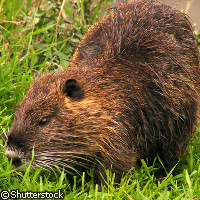Study reveals costs of damage caused by invasive species
EU-funded researchers are counting the costs of the damage caused by invasive species in Europe. Writing in the journal Frontiers in Ecology and the Environment, scientists from the DAISIE ('Delivering alien invasive species inventories for Europe') project highlight the invasive species with the greatest economic and environmental impacts. The findings of the project will contribute to the EU's Strategy on Invasive Alien Species. Some 10,000 invasive species have set up home in Europe, yet we only have data on the economic impacts of 1,347 species, while information on ecological impacts is available for just 1,094 species. 'The impacts of many invaders go unnoticed, and our lives depend on the ecosystem services provided by species,' warned lead author Montserrat Vilà of the Estación Biológica de Doñana (Department of Conservation Biology) in Seville, Spain. 'The presence, and many times the dominance, of non-native species can cause many ecological impacts that translate to changes in ecosystem services. These changes can be irreversible, and many are as important as the changes caused by climate change or pollution.' In this latest study, the researchers investigated the impacts of 100 of the most damaging invasive species on a range of ecosystem services, including 'supporting' services (such as water and energy cycles), 'provisioning' services (like crop pollination), 'regulating' services (such as water filtration) and 'cultural' services (recreation and aesthetic benefits, for example). Their analyses revealed that terrestrial vertebrates have impacts on a wide range of ecosystem services. For example, the coypu, a semi-aquatic rodent, originally from South America, damages crops and natural vegetation alike, undermines riverbanks by burrowing, and transmits a bacterial disease. Meanwhile, terrestrial invertebrates have impacts in a narrower range of areas, but cause the most economic damage. These species have a major impact on crops and forests; crop losses due to alien arthropods in the UK alone are estimated to be almost EUR 3 billion, while Italian efforts to control the Asian long-horned beetle have cost the country over EUR 1 million. Most of the costs associated with invasive species come from efforts to monitor, control and eradicate invaders, as well as education programmes. The most expensive invaders include the water hyacinth (EUR 3.4 million), the coypu (EUR 2.8 million) and marine algae (EUR 8.2 million). The economic sectors that suffer the most are agriculture, forestry, fisheries, conservation, and health, the scientists note. According to the researchers, much more research into the impacts of invasive species is urgently needed. Here, Europe could learn a lot from the United States, where far more studies on the impacts of native species are carried out. On the other hand, the US would do well to develop an inventory of invasive species, along similar lines to the DAISIE database. An American database could link up with DAISIE, the researchers suggest. 'We need to harmonise the existing information on impacts across species and across regions,' Dr Vilà concluded. 'Then, finally, we will be able to create institutional bodies across sectors, such as agriculture, environment, health and transportation, to tackle the prevention and management of the impacts of biological invasions.'

